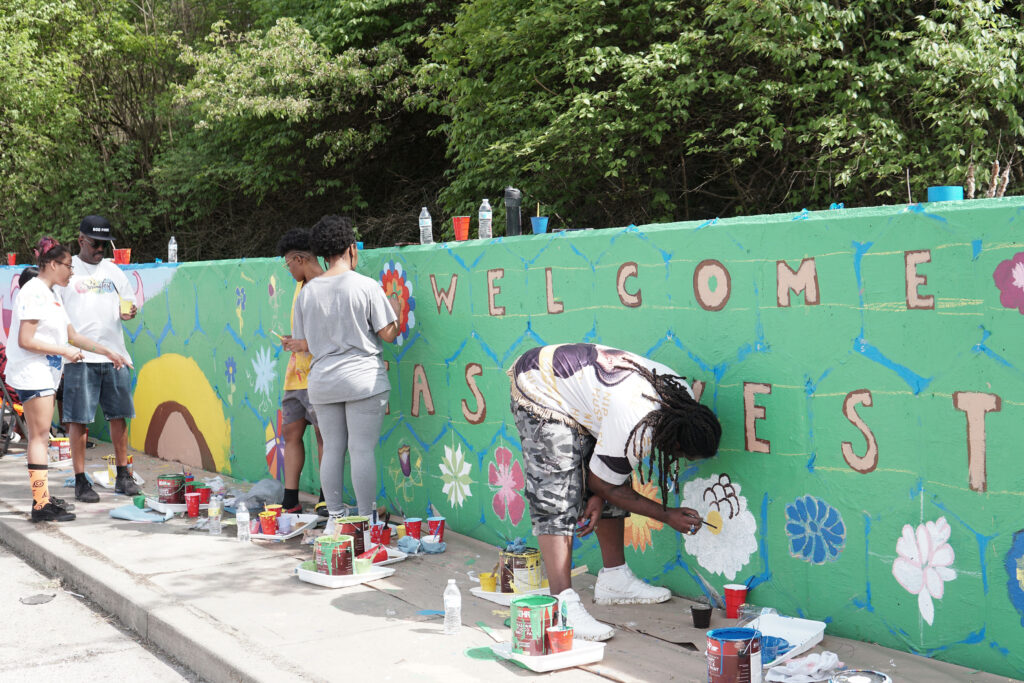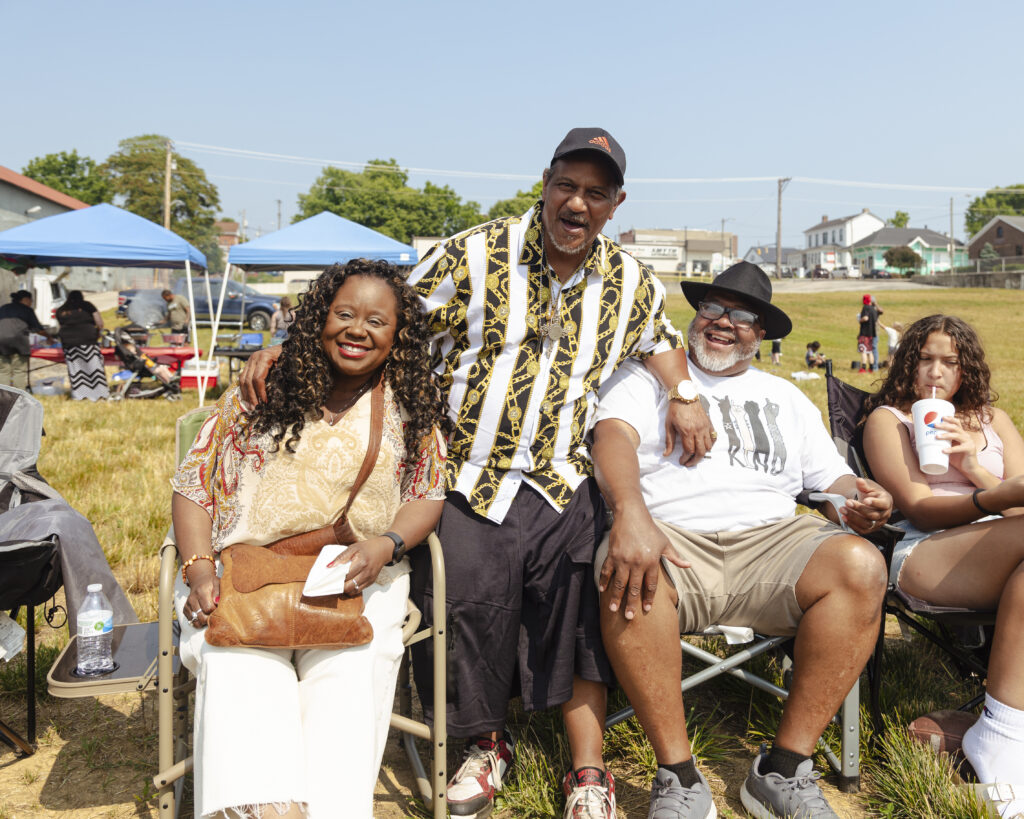If you’re a neighborhood leader who wants to find creative, strategic ways to maintain the spirit and vibrancy of your community, look no further! ioby’s comprehensive guide to creative placekeeping outlines everything you need to know to launch a transformative project in your neighborhood. Maybe you heard about placekeeping through the NEA creative placemaking and placekeeping grants, or maybe there’s a cultural site in your community that you are longing to preserve. Either way, this guide will give you the tools you need to ideate, launch, and maintain a compelling creative placekeeping project.
What is creative placekeeping?
The U.S. Department of Arts and Culture defines creative placekeeping as “…the active care and maintenance of a place and its social fabric by the people who live and work there. It is not just preserving buildings but keeping the cultural memories associated with a locale alive, while supporting the ability of local people to maintain their way of life as they choose.”
Creative placekeeping has become popular in recent years as rates of gentrification — or the process of displacement that can occur when new, wealthier residents enter a neighborhood — rise around the United States. It is a powerful tool to maintain the character of a place, whether through preserving a theater that has served the community for generations or teaching the next generation about the history of a local festival. Importantly, creative placekeeping focuses on the existing assets of a place, and it is most often led by neighborhood leaders who have lived there for several years, if not generation.
Creative placekeeping vs. Creative Placemaking
The terms “creative placekeeping” and “creative placemaking” are often used interchangeably. While they both refer to developing site-specific creative projects, there are some key distinctions. In the past several years as “creative placemaking” has gained popularity, activists have pointed out that the term often refers to the leveraging of outside government, nonprofit, and private fundings to accomplish strategic goals. As the name suggests, this emphasizes “making” something new—instead of what already exists. In contrast, creative placekeeping emphasizes existing assets in a neighborhood, and most often relies on funds raised from neighbors and community leaders on platforms like ioby. Instead of strategic change, the goal is to maintain the pre-existing character and values of a neighborhood.
Now, let’s dive in with ioby’s comprehensive guide to starting a creative placekeeping project.
[Already think you have a creative placekeeping project idea? Share it with us! We can help.]
- Research:
As our previous definition reveals, a core goal of creative placekeeping is to preserve cultural assets. In order to identify these assets, it’s important to conduct research. First, speak with other neighbors, community organizers, and longtime residents to learn about other initiatives in a neighborhood. Maybe that art deco theater you want to refurbish already has a fundraising team trying to do the same thing! However, if it’s clear that no one else is working on a similar project that you could join, this research will provide meaningful context for your project. Some questions you can ask are:
- What are your earliest memories associated with this place?
- What does this place mean to you?
- Do you have any meaningful stories about this place?
Creating recordings can be a powerful way to maintain the oral history of a neighborhood that is rapidly changing. If you leave near a university, they may also have documents and images from their archive that can help you plan for the future.
- Develop your team.
Since creative placekeeping projects engage an entire neighborhood or community, it is important to have a wide range of people involved to ensure an inclusive, diverse project. Feel free to visit preexisting community hubs—such as Parent Teacher Associations, sports competitions, or city council meetings—and ask to speak about your proposed project. It can also be helpful to use platforms like Instagram and Facebook to spread the word about your plan and attract a wide variety of interested participants.
Once you have a solid group of 3-10 people, start to outline distinct areas of expertise. These can be formal roles, such as project manager, or more loose alignments, such as “school liaison.” Having clear roles will ensure everyone brings their strengths to the table and work is not duplicated. It can also be helpful to define a decision-making process at the beginning of your work together. Will you make decisions through consensus or majority rules? Making these decisions early on can help minimze conflicts down the road.
- Define your vision.
Next, it’s time to get clear on what you hope to accomplish with your project. Through a “community visioning process,” you can develop consensus on what you want your community to be, where the community is heading, and what has to be done to to achieve the desired common vision. Remember, every creative placekeeping project is as specific as the neighborhood it inhabits. Your goal might be to preserve a cultural site that is at risk of being lost to outside development or to address a specific challenge in your city. For example, after consistently high rates of hit and runs in Memphis, organizers created #ChrisCrosswalk to heighten pedestrian safety. They created a colorful crosswalk that honored the memory of Christopher Phillips while adding traffic lights. However, this is just one example. Through the definition process, you can get clear on the challenges your community faces and your response.
Once you have your shared project vision, write it down as a community north star. When your project hits road bumps or challenges, return to the vision you first had for the space.
- Fundraise.
A written statement will also help you in the next phase—fundraising. Instead of viewing fundraising as a “necessary evil” to get your project off the ground, fundraising can be seen as a powerful way of inviting people into a vision for the community through resources. A strong vision statement can help people understand where their dollars will go beyond the immediate scope of the project.
For a strong creative placekeeping statements, check out this fundraiser by Street Beats Los Angeles. They specifically identify how they’re creative placekeeping project — a weekend long community festival — contributes to their broader goal of making Crenshaw Blvd. “a model of how music, art, and culture can bring people together to re-envision Los Angeles streets to better meet their needs.” If you’re worried about fundraising, ioby provides coaches through every step of the process, from getting your project off the ground to tax deductible donations.

- Start the project!
Once you’ve created a vision statement and fundraised, it’s time to start your project! It can be helpful to launch with a community-wide celebration, such as a drag performance or barbecue. This will get people excited about the project (and ensure they know what’s going on when they see a large group of people painting the new theater!) This can also be a good moment to reach out to the community organizations, residents, and universities you worked with in earlier steps. They might be able to connect you with additional volunteers or resources.
- Consider long-term sustainability.
Congratulations! You’ve researched, fundraised, and launched your project! Now it’ time to consider its long-term sustainability. Who will be responsible for the maintenance of the project in 5 or 10 years? How will you maintain resources for your community? These are important conversations to have because you want your neighborhood to be resilient for generations to come. Setting up resources now—whether that’s through a community land trust or oral history project—will ensure that the next generation understands the history of their neighborhood.
Additional resources:
- Americans for the Arts Creative Placekeeping Guide introduces a network-building approach to creative placekeeping, with a specific emphasis on neighborhood crisis planning. It is a result of their April 2016 convening, “Readiness and Resiliency: Advancing a Collaborative and National Strategy for the Arts in Times of Emergencies.”
- The Citizen Artist Salon hosted three luminaries—Betty Yu, Dave Lowenstein, Roberto Bedoya—to discuss cultural strategies to resist displacement. Their video conversation focussed on keeping the cultural memories associated with a locale alive.
- If you are registered as a 501c(3) nonprofit, the NEA creative placemaking and placekeeping grants offer financial support to nonprofit organizations each year through their “Our Town” grants.
ioby is a national crowdfunding nonprofit, but we’re much more than that. We help connect leaders (like you!) with one-on-one coaching and support to raise the money they need from their communities to make our neighborhoods safer, greener, more livable, and more fun.
Have a great idea to get good done in your neighborhood? We want to help! Share your idea with us and we can help get you started.
